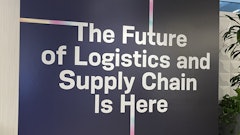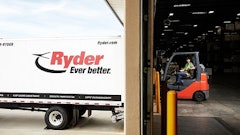
Produce season is in full swing and peak beverage shipping is right around the corner, meaning more trucks will be delivering goods to stores at record levels, and consumers will be clearing the shelves at the highest rates of the year.
Many of the vehicles powering this influx of deliveries are medium-duty, a category that uses over 8 billion gallons of fuel a year, accounts for 26% of greenhouse gas (GHG) emissions in the transportation sector, and falls only second behind consumer cars.
All last-mile food deliveries should be made with electric vehicles (EVs) sooner rather than later. So, the big question is, why aren’t we there yet?
Elevated payload and weight concerns during peak seasons
The food and beverage supply chain often requires a greater payload than small vans can handle, especially during peak produce and beverage seasons. Many shippers are in need of established vehicles that can service 2- to 6-ton payloads with the same reliability and an even better driving experience than traditional internal combustion engine trucks.
That’s where medium-duty electric vehicles come into play. Today, battery and technology innovation has made it possible for Class 4-6 trucks to increase their payloads and driving ranges, carrying 2-6 tons up to 200 miles per charge, which is enough for 95% of urban and suburban daily routes.
Electrifying medium-duty vehicles enable shippers to unlock zero emissions and quieter operations, while still handling the payload and providing the same grocery storage capacity.
It takes a lot of energy to keep refrigerated goods cold
On top of payload confidence, drivers are also riddled with range anxiety, which is exacerbated when moving refrigerated goods that take a lot of energy to keep cold.
The North American Council on Freight Efficiency (NACFE) actually determined that medium-duty box trucks are an ideal fit for electrification due to their shorter distances and return-to-base operations.
Plus, the rise of more efficient, high voltage refrigeration solutions is enabling food companies to run refrigerated EVs efficiently and with only a 5-10% impact on the range the vehicle can run on a single charge. With cooling and pre-cooling solutions for box truck designs, trucks can maintain proper temperature with minimal draw on the vehicle’s EV battery. By doubling down on innovations like these, companies can ensure the safe and sustainable transport of cold food and beverages.
Medium-duty’s role across the cold food supply chain
By electrifying the medium-duty step vans and retail goods vehicles that keep the cold food chain moving forward, everyone wins – consumers, shippers, and drivers alike.
For one, consumers are increasingly in favor of more sustainable shipping methods. In a recent study, 69% of consumers said sustainable shipping has influenced their past purchases, while 76% say they would pay an extra 5% for more sustainable shipping.
Shippers who electrify their fleets not only win the favor of more sustainably-minded shoppers, but they also set themselves up to meet rapidly approaching EV regulations. With zero-emission fleet requirements from states like California and nationwide goals set by the U.S. government, funding incentives are up for grabs for companies looking to meet deadlines. Likewise, medium-duty fleets that go electric also position themselves as leaders in sustainability, help reinforce broader company-wide ESG objectives, and even stand to save on costs. If we achieve 100% new medium and heavy-duty ZEVs sales by 2040 – a goal set by the Biden-Harris Administration – Americans would save up to $27 billion annually in pollution benefits and $485 billion cumulatively by 2050.
Drivers will appreciate their companies making the move to electric, too. These vehicles are their office, their sales storefront and their break room. Eight or more hours a day – every day. Imagine how much better their day can be when the truck isn’t noisy, vibrating, baking with heat from its engine, and spewing unsafe fumes. The Natural Resources Defense Council (NRDC) found that large amounts of diesel exhaust can accumulate inside truck cabs from the driver’s own engine, surrounding trucks and crowded port environments. Inhaling these pollutants for hours at a time has serious health consequences. Once most drivers get in the electric truck – they don’t want to return to fossil fuels.
Ultimately, the environment will reap the greatest benefits of the shift to electric medium-duty vehicles. In fact, the Environmental Defense Fund uncovered that if we eliminate tailpipe pollution from medium and heavy-duty ZEVs by 2040, we’ll avoid 224 million metric tons of GHG emissions every year. By building trucks with the most advanced electric batteries and motors that deliver groceries to homes, bread to stores, and refreshments to offices – we can bridge the gap between the future of a fully electrified world and the need for clean and efficient transportation.
When food comes to your doorstep or gets brought to a neighborhood store, the emissions and noise of combustion engines should not come with it. We can ultimately nourish a better and more sustainable world, starting with the way we move goods.


























